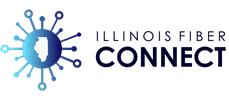FAQs
Frequently Asked Questions
Fiber-to-the-Home (FTTH) is the broadband delivery model that extends fiber-optic cables all the way to the home or business. Sometimes it is referred to as Fiber-to-the Premise (FTTP).
FTTH offers many advantages to residential customers and businesses alike and prepares everyone to enjoy an even greater selection of communications options in the future.
Fiber to the Home (FTTH) refers to the installation and use of fiber-optic cables to carry digital information directly to homes and businesses. These cables are made up of hundreds or thousands of fiber optics, which are long thin strands of pure glass about the diameter of human hair. FTTH replaces the duplicate infrastructure that telephone and cable companies previously installed in neighborhoods. Fiber has a higher bandwidth capacity and can easily transmit applications like telephone and internet with plenty of capacity left over for other applications in the future.
More Bandwidth
Fiber has the capability to transport virtually unlimited bandwidth. This will accommodate today’s demand for high-speed internet connections as well as the advanced applications of tomorrow.
Future Flexibility
FTTH is considered “future proof” and offers the flexibility to deliver additional services in the years to come.
Greater Service Reliability
Fiber optic cable is tremendously reliable and has greater tolerance of conditions that can negatively affect copper or coaxial lines such as temperature fluctuations, severe weather, moisture, and interference from electronics and radio signals.
A fiber connection will provide you with access to virtually unlimited bandwidth capacity and internet speed, enabling you to enjoy a better experience with data-intensive applications such as streaming, online gaming, cloud storage, online education, and more. Fiber also increases service reliability and stability.
Fiber-optic cables contain optical fiber, which are hair-thin strands of glass specially designed to trap and transmit light pulses. Unlike copper, optical fiber can carry data for great distances without signal loss or interference. Optical fiber can also transmit signals in both directions simultaneously — upload and download at extremely high speeds.
